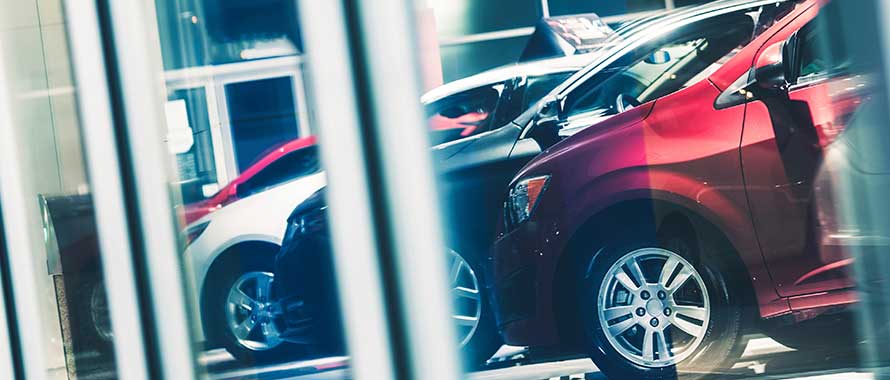With more than 45,000 used car dealerships in the U.S., more than 40 million used vehicles are sold each year.1
To protect the vehicle inventory, Dealer’s Open Lot insurance provides coverage for physical damage to a dealer’s vehicles and equipment. Car dealerships can vary from lot to lot, and are unique businesses that require tailored coverage for the specific risks they face. Protection extends beyond cars sitting on a lot.
“Dealer’s Open Lot insurance also covers cars in transit while dealers are: driving for personal use; picking up or delivering vehicles to and from clients, repair shops and auctions; and test driving, ” said Leslie McGuire, Underwriting Manager, Commercial Insurance, Burns & Wilcox, Salt Lake City, Ut.
Dealer’s Open Lot insurance is not only reserved for private passenger vehicles. Coverage under this insurance may include motorcycles, antique vehicles, heavy trucks, ATVs, and contractors and farm equipment.
One of the most important messages to drive home with a client is to make sure the lot is insured to value.
Navigating Dealer’s Open Lot insurance takes knowledge and expertise, giving brokers and agents an opportunity to educate clients on how coverage should be personalized for their specific needs.
Show alternate routes
The amount of lot protection can impact coverage. With varying types of dealerships across North America, Ryan Gregg, Senior Garage Underwriter, Commercial Insurance, Burns & Wilcox, Indianapolis, Ind., provided insight on the four different levels of protection, including:
- Unprotected lots: do not have fencing or other barriers protecting vehicles against theft. For this reason, policies may carry a higher deductible or even exclude theft altogether.
- Non-standard protections: some level of barriers but the entirety of the vehicle inventory is not covered or protected.
- Standard protection: the entire vehicle inventory is covered and protected.
- Building protection: the dealer stores vehicles inside a building at all times, making this the lowest level of exposure.
“With higher levels of lot protection, premium and deductibles are generally lower,” said McGuire. “Clients can receive a rate credit if the lot is at least enclosed because, much like a normal auto policy, theft deterrent will reduce the premium.”
Brokers and agents can use this knowledge to advise clients about the weight that levels of protection carry when writing or renewing a policy, as increased lot protection can lower costs.
McGuire added that “Some dealers that buy and sell at auctions sometimes do not have a lot. Their vehicles would be covered under this policy as well.”
Avoid coinsurance
As inventory on a lot grows, exposure increases. One of the most important messages to drive home with a client is to make sure the lot is insured to value. This means confirming that the insured limit on the policy matches the value of the vehicles on the lot.
“When writing a policy, we usually write for the maximum value that the owner believes they will have in inventory throughout the term of the policy. If damage occurs to some or all of the inventory, and the value exceeds that maximum written in the policy, then a coinsurance penalty comes into play,” said Gregg.
For instance, if a client has a policy with a $100,000 lot limit and experiences a loss at a time during when there are $200,000 worth of vehicles in value, then the client would only receive 50 percent reimbursement for all losses.
McGuire explained “Brokers should be sure to capture the proper value upfront and advise clients to contact them if that value changes over time. Scheduling regular lot inspections for these clients are recommended.”
“Many businesses try to save money in premium charges by undervaluing the lot at the onset of the policy,” said Gregg. “Brokers should consider carefully discussing this nuance with their clients, as a lower lot limit may save them money in premium, but ultimately can hurt clients with an even greater cost should a claim occur.”
How’s the weather ahead?
For clients operating in coastal states, policies likely carry wind, hail or flood exclusions—especially if the lot is within 25 miles of the coast.
“For clients who are a bit more than 25 miles away from the coastline or in a hail-prone state, coverage is still available. However, it more than likely will be accompanied by a wind, hail, or flood deductible per vehicle with no maximum aggregate,” Gregg advised.
In normal conditions, deductibles are limited at five times the aggregate. If, for instance, a wind or hail storm damages 50 cars on the lot and the per-vehicle deductible is $1,000, the client would have to pay only $5,000 to repair all 50 vehicles. Rates are also predicated on whether a lot is in a rural or urban area.
“Since there tends to be more losses in highly populated areas, clients will often see higher rates in large, metropolitan cities,” said McGuire.
Ultimately, Dealer’s Open Lot insurance policies work like traditional auto policies. The main differences exist in: the enhanced clauses, coverages, and exclusions based on the business; its location; and vehicle inventory value. Having transparent and informative conversations with clients will assist brokers and agents in garnering the correct amount of coverage.
Source:


